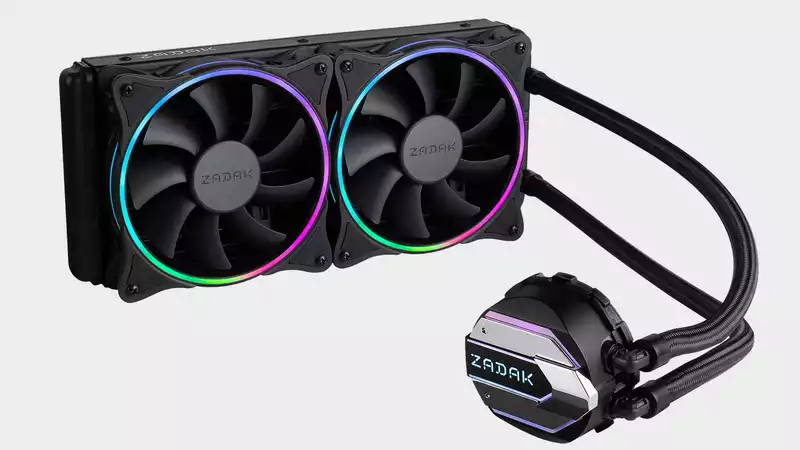The Zadak Spark AIO doesn't look too outlandish, at least on paper: a pump block that sits on top of the CPU, two hoses that connect it to a 240mm radiator, two of Zadak's own 120mm fans that screw onto this radiator, and a a little sprinkle of addressable RGB, and you're done. That's essentially all there is to the Spark AIO, making its current $210 price tag a little harder to swallow.
To be fair to Zadak, this is not the official MSRP, which at $159 is on the higher end of 240mm AIO coolers, but not outlandish. However, $210 is another matter, and is inherently too high. This could simply be due to current demand, or it could be a supply issue. Either way, the purchase options are limited, as Amazon is the only place that carries this product at the moment.
Availability and price aside, there are many positives to the Spark AIO: it looks good, is relatively easy to install, and cools the CPU properly. It may be a bit noisy at full load, but it is noticeably quiet under normal workloads.
It is also great that it is compatible with all chips. This cooler is also a great cooler to use when upgrading your system, but you will need some more thermally conductive compound as there is no extra thermal compound in the box (the pump block is pre-applied with thermal paste).
Installation is simple: the cooler secures the pump block with a conventional locking ring mechanism. Orientation may be a bit tricky the first time around, as the unit moves on its own when you try to install the hoses in place. The good news is that the tool-less locknut for this ring is large enough and easily screwed on.
Assembling the radiator is also easy: screw the two Zadak fans onto the radiator and attach the radiator to the case. Each fan has an ARGB cable and a power cable that must be routed so that the cables are out of the way in the case.
The pump block also has two cables, one to power the pump and the other to control the RGB touch on the block itself; Zadak ships with a controller hub to help ensure synchronization of the system lighting. Overall, however, there are more cables involved, and cable routing requires some ingenuity.
In practice, we found that the Spark AIO performed well and did a good job of keeping temperatures at reasonable levels across the various chips and setups. However, when pushing these chips hard, the temperatures and noise levels are not as impressive.
This cooler, which I used on the Zen 3 CPU at launch, performed adequately for the most part; the 105W 5900X maxed out at 81°C, which is reasonable, while the 5800X recorded a more unpleasant 90°C. The 65W 5600X, on the other hand, recorded 58°C at full load, while the bundled Wraith Stealth cooler, for comparison, was at 72°C. These figures were recorded while running the exact X264 v5.0 video encoding benchmark.
ARGB lighting works well with the included hub, but if you want more control over system-wide lighting, you may want to check your motherboard manual for compatibility. However, if you want full embellishment, you'll probably need a standalone ARGB controller.
Overall, the Zadak Spark AIO 240 is a high-quality cooler that performs and looks good, but does not stand out in a crowded market. It is too expensive at its current list price and is not a must-buy, even when viewed at MSRP.
However, this is Zadak's first attempt at an all-in-one cooler and bodes well for the future. They have done a lot here. It's not perfect, but it's a good place to build from. Better fans would make a big difference and there is room for tweaks here and there. As it stands, this is a decent cooler with a healthy 5-year warranty, not enough to impress.
.

Comments